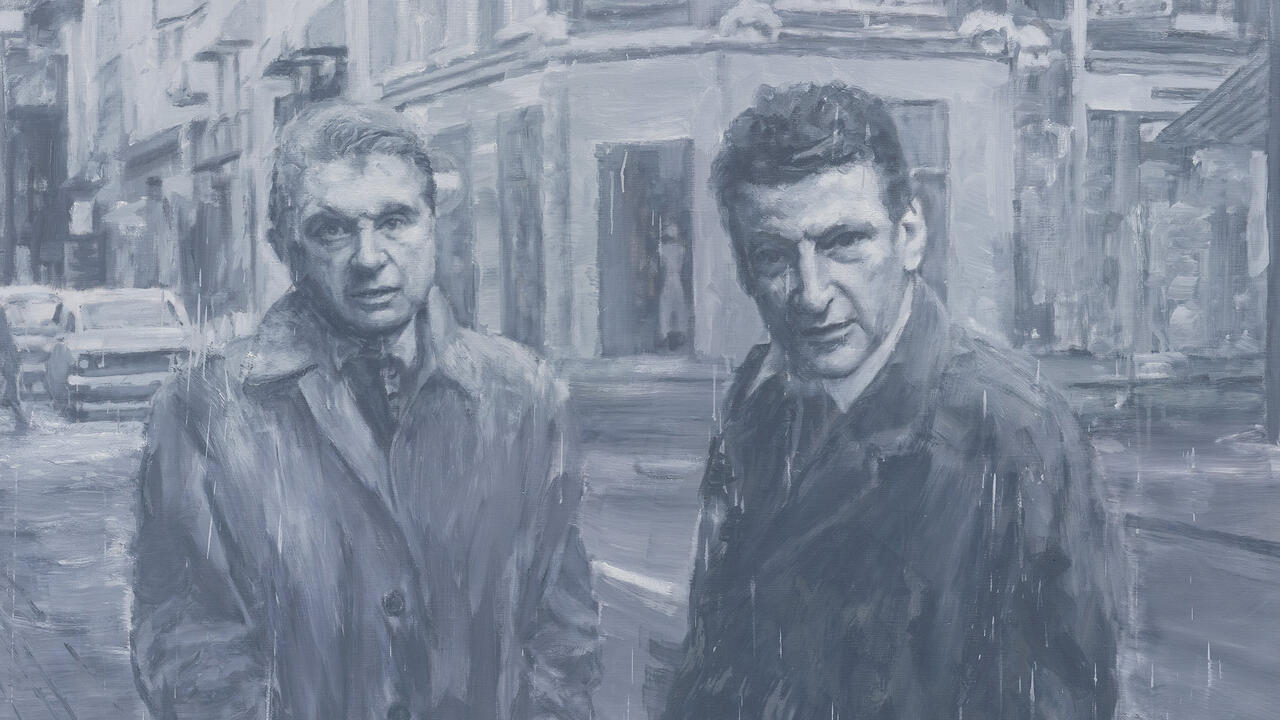Anja Kirschner and David Panos
Chisenhale Gallery, London, UK
Chisenhale Gallery, London, UK

Towards the end of Anja Kirschner and David Panos’ latest film, The Last Days of Jack Sheppard (2009), the notorious 18th-century thief Jack Sheppard addresses the vast crowd at Tyburn that had assembled to witness his execution. Standing in the shadow of the gibbet the pale 22-year-old (whose spectacular jail-breaks won him London’s adulation) uses his final breath to endorse the published account of his life. As the noose is slipped around the condemned man’s neck, Applebee the bookseller brandishes the manuscript at the hordes, ‘Available for sixpence!’ With this act Sheppard’s life becomes fiction, a profitable commodity during an era when the spread of print was helping to shape British society. The scene conveys one of the central themes of the film: the complex relationship between reality and representation. Featuring a cast of writers, whores, periwigged fops, criminals and masked revellers the filmmakers have produced a critical costume drama that considers the protean nature of identity and the pleasures and consequences of the imagination.
The 1720s in Britain, when this film is set, was a decade of spectacular crimes committed in both high and low society. The South Sea Company, which had a monopoly on trade in Spain’s South American colonies, had involved politicians and financial investors (from all levels of society) in a pyramid scheme of frenzied speculation. When this economic bubble burst, thousands faced financial disaster but, despite this, the company directors were never prosecuted. After the company had been restructured it continued to operate. The fiasco not only ruined the credit of the nation but destroyed the public’s faith in government. Amid these sentiments, as the film makes plain, a petty criminal like Sheppard became a kind of anti-establishment hero, confounding the authorities and ingeniously evading the system. His hanging served only to strengthen public outrage at the different kinds of justice meted out to peasants on one hand and lords on the other. This is a world of boom and bust, which must live under the delusions of capitalism even when it has been proven to fail. Daniel Defoe, alleged to be the ghost-writer of Sheppard’s ‘autobiography’ is just another of its victims. (Defoe was in and out of debt throughout his career and was said to be in hiding from his creditors when he died.) In the film’s inferred meetings between the two men, both are seen to fantasize about escape. As Defoe points out, ‘It is as reasonable to represent one kind of imprisonment by another, as it is to represent any things that really exists by that which exists not.’
Kirschner and Panos’ films revisit the past in order to shed light on the present. In their previous collaboration Trail of the Spider (2008) they transported ideas from American folklore to the ‘wilderness’ of London’s Hackney Marshes, interweaving documentary and fictional sources in a tale charting the forced eviction of shopkeepers from an East End market. The Last Days of Jack Sheppard takes its inspiration from the original prints, ballads and literary accounts of Sheppard’s life in order to explore the 21st-century concerns of an image-conscious society fascinated with the transforming power of wealth. Kirschner has suggested that the experience of watching the film might be a little like looking at an 18th-century engraving; some of the contemporary satire and references inevitably get lost, but the main arguments and the aesthetic principles endure. This is not a purely theoretical point; the garrets, coffee houses, offices and prisons where the action takes place are recreations lifted from the printed books, woodcuts and engravings of the time. Discarded papers, bills and worthless stock swirl around the characters, emblems of the mania and collapse of what William Hogarth called ‘this Projecting Age’. This careful integration of primary sources sometimes has the effect of making the protagonists appear to move between two- and three-dimensional space. In one scene the hero appears as a silhouette, climbing into a print depicting the various holes he made when conducting his final escape from Newgate Prison, a metaphor for the way in which his life is translated into fiction.
The filmmakers have taken care to recreate a sense of the period, to the extent of employing an expert in 18th-century deportment to perfect the actors’ exaggerated mannerisms. But the film also includes deliberately anachronistic details, with lavishly costumed characters quoting Karl Marx or predicting a post-industrial future built on endless credit. Scenes from Defoe’s Robinson Crusoe (1719) are interspersed with allusions to fictionalized versions of Sheppard’s life including John Gay’s The Beggar’s Opera (1728) and Harlequin Sheppard, the play produced two weeks after Sheppard’s death in 1724. This interplay of references creates a rich if slightly disorientating effect, heightened by the over-dubbed soundtrack and conspicuous use of half-erected stage sets through which the protagonists are framed. With its peculiar theatricality The Last Days of Jack Sheppard bears comparison with Derek Jarman’s films, while its attention to scenic composition resembles those of Peter Greenaway. A blank white section of the original set was preserved as an installation at Chisenhale Gallery (where the film itself was shot). Having served first as the ceiling beams of Sheppard’s workshop and later as the gallows, it suggested that the constructions and fantasies we entertain extend beyond the confines of art into the everyday. Its presence was also a reminder that, as Matt of the Mint comments to Macheath (the figure John Gay based on Sheppard): ‘hanging is something we all must come to’.
























